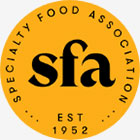

Disruptive packaging design elements to help you stand out.
Today’s CPG pet food brands are vying for attention in what feels like the wild west of food packaging. Helping consumers recognize your product will build loyalty, and you do so by creating ownability for your brand.
Think “outside the box.” Whether you can invent something entirely your own or adapt from elsewhere in a way no one else has thought of, the uniqueness of your product, branding, and design will make consumers notice.
Break From Category Congruity
The sector daily sees more innovation, challenger brands, and emerging product options. Look at raw pet food: according to data from Packaged Facts, the category alone is growing at a CAGR of 11.3% YOY. Many new pet food brands marry their package design with expectations set by category leaders to feel familiar. At Global Pet Expo, traditional pet food packaging design was alive and well––from silhouetted imagery of pets to expected color choices and even lookalike fonts.
Unique photography, unexpected color palettes, and custom illustrations are design elements that evoke emotion.
Breaking from category norms is a solid strategy for disrupting at shelf, and something as simple as adopting cues from the broader category still creates distinction. A die-cut window for treats to show scale is a common expectation but not something you see in kibble. There, it can communicate the authenticity of ingredients, add a playful component to the design, or just be slightly different from everyone else.
Adopt Proprietary Features
Differentiate your product from the competition with unique packaging or a new formula. A proprietary structure captures consumers’ attention and stands out from the competition. Still, it does require an investment, and if it’s not category appropriate, it can spur cynicism. It’s a delicate balance. Adopt cues and structures from a similar but different subcategory. Smaller-scale gusseted bags or eco-friendly boxes for kibble can be ownable in the dog food category if no one else uses it the same way. (Boxed Water in a milk carton is an excellent example of creating ownability through a cross-categorical structure).
You could also create proprietary features by adapting stock packaging with a unique closure system or a custom printing technique. These features help with premium products, making them feel more exclusive and of higher quality. A signature shape to the treat or kibble also creates a ton of ownability and carries the brand’s strength through every touchpoint. Bocce Bakery’s B-shaped treats are a great example of this.
Customize Design Elements
Emotion drives the pet food category, giving brands multiple opportunities to create a deeper connection with primed consumers at every design touchpoint. A custom font designed exclusively for the brand identity immediately creates recognition and a WOW factor. Super unique photography, unexpected color palettes, and custom illustrations are additional design elements that evoke emotion in a consumer and create distinct memorability. If your custom elements are original enough, it can also escalate your brand to feeling more like a category leader the second another brand tries to do something similar.
Temptations cat now dominates the cartoon-style cat for treats. Greenies owns the deep green by going in on an unexpected color in the category. One caveat to over-customization: There is much to communicate on pet food packaging, so navigation is not the place to do something completely original, but anywhere else is game.
The number of products on store shelves is multiplying daily in the rapidly growing $30 billion pet food industry. With new product forms, functionalities, and benefits emerging at lightning speed, expectations from packaging design for the category are shifting on a dime. Standing out in a chaotic environment helps pet parents decide between similar products and gives your brand a stronger seat at the table … er, shelf.
For more insights on pet food branding, check this article out.









